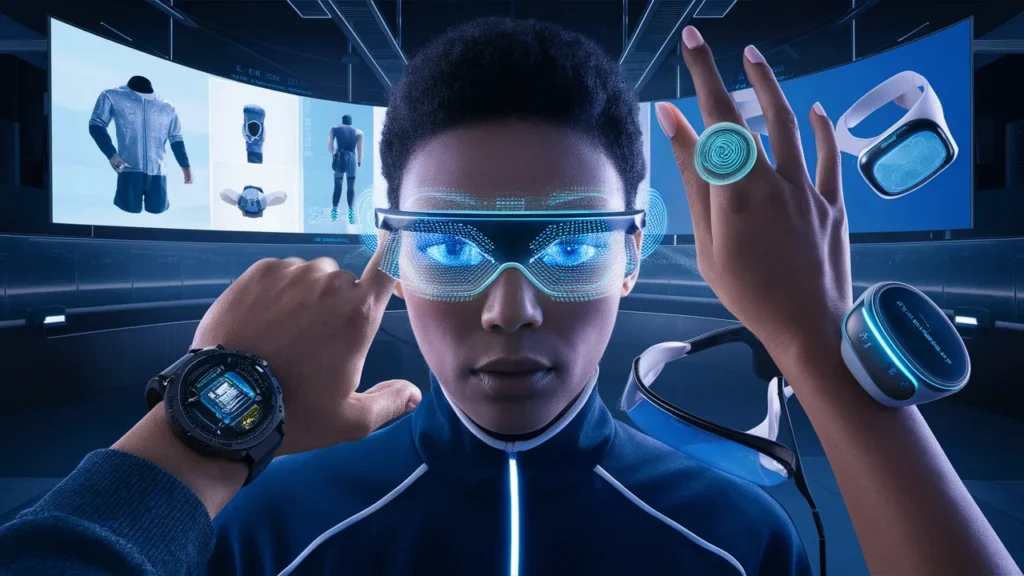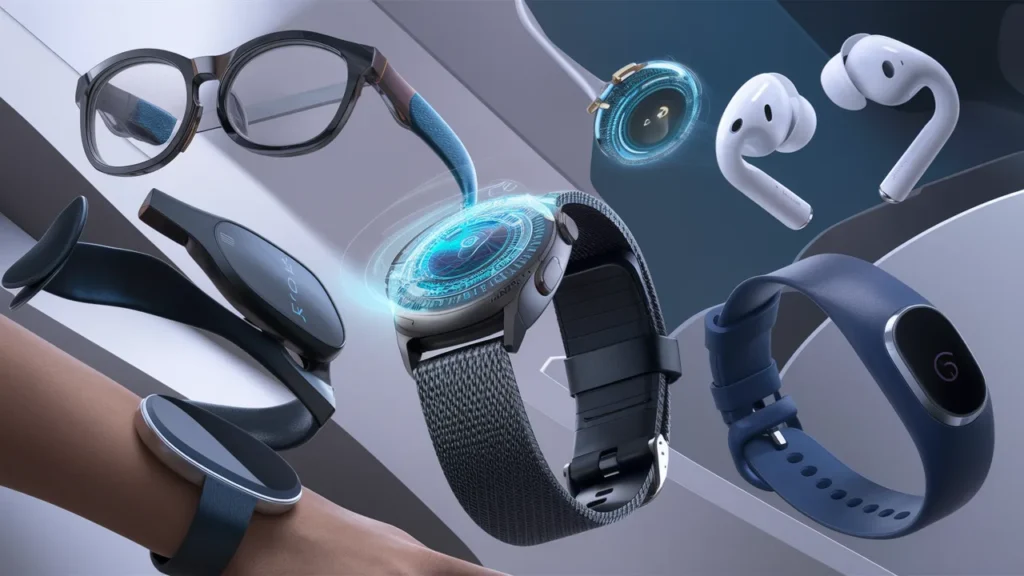In an era driven by technological innovation, wearable technology has emerged as a prominent trend, blending fashion with functionality to enhance various aspects of our lives. From fitness trackers to smartwatches and beyond, wearables continue to evolve, offering new features and capabilities. In this article, we delve into the latest trends shaping the wearable technology landscape, addressing common questions and shedding light on what the future holds.

1. What are the current trends in wearable technology?
Wearable technology is experiencing a significant shift towards integration with everyday accessories and clothing. The following trends are dominating the wearable market:
a. Health Monitoring
One of the most significant trends in wearable technology is its focus on health and wellness. Wearables equipped with advanced sensors can monitor vital signs, track physical activity, and even detect potential health issues. Devices like smartwatches and fitness bands offer features such as heart rate monitoring, sleep tracking, and stress management tools, empowering users to take control of their well-being.
b. Smart Clothing
The integration of technology into clothing is gaining momentum, with smart textiles and garments designed to provide various functionalities. From temperature regulation and moisture management to embedded sensors for tracking body movements, smart clothing offers a seamless blend of style and utility. Companies are exploring ways to incorporate flexible electronics and conductive fabrics into everyday apparel, revolutionizing the fashion industry.
c. Augmented Reality (AR) Glasses
AR glasses are redefining the way we interact with the world by overlaying digital information onto our physical surroundings. These wearable devices enable immersive experiences, ranging from gaming and entertainment to navigation and productivity applications. With advancements in optics and display technology, AR glasses are becoming more lightweight, comfortable, and accessible, paving the way for widespread adoption in various industries.
d. Personalized Experiences
Wearable technology is increasingly focused on delivering personalized experiences tailored to individual preferences and needs. Machine learning algorithms analyze user data to provide actionable insights and recommendations, enhancing the overall user experience. Whether it’s suggesting personalized fitness routines, offering targeted notifications, or adapting device settings based on user behavior, personalization remains a key driver of innovation in wearables.

2. How are wearables impacting healthcare?
The integration of wearable technology into healthcare has the potential to revolutionize patient monitoring, diagnostics, and treatment. Here are some ways wearables are making an impact:
a. Remote Patient Monitoring
Wearable devices equipped with health monitoring sensors allow healthcare providers to remotely track patients’ vital signs and health metrics in real-time. This enables early detection of health issues, facilitates timely intervention, and reduces the need for frequent hospital visits, particularly for individuals with chronic conditions.
b. Health Data Insights
The wealth of data collected by wearables provides valuable insights into patients’ health and behavior patterns. By analyzing this data, healthcare professionals can gain a deeper understanding of individual health trends, identify risk factors, and customize treatment plans accordingly, leading to more personalized and effective care.
c. Preventive Healthcare
Wearables empower individuals to take a proactive approach to their health by providing continuous monitoring and feedback. From encouraging physical activity and promoting healthy lifestyle choices to detecting early signs of illness or injury, wearables play a crucial role in preventive healthcare, helping users maintain optimal health and well-being.
3. What challenges do wearable technologies face?
While wearable technology holds immense promise, it also faces several challenges that need to be addressed:
a. Battery Life
One of the primary concerns with wearable devices is battery life. As wearables become more feature-rich and capable, the demand for longer battery life increases. Manufacturers are constantly striving to optimize power consumption and develop more efficient battery technologies to prolong device uptime.
b. Data Privacy and Security
The vast amount of personal data collected by wearables raises concerns about privacy and security. Safeguarding sensitive information from unauthorized access and ensuring compliance with data protection regulations are paramount. Manufacturers must implement robust security measures and transparent data policies to earn users’ trust.
c. User Experience
User experience plays a crucial role in the adoption and usability of wearable devices. Designing intuitive interfaces, optimizing performance, and minimizing friction points are essential for creating seamless and enjoyable experiences. Balancing functionality with comfort and aesthetics is also key to enhancing user satisfaction.
4. What advancements can we expect in the future of wearable technology?
The future of wearable technology holds exciting possibilities, driven by ongoing advancements in materials science, artificial intelligence, and connectivity. Here are some anticipated developments:
a. Wearable Health Tech
The integration of advanced sensors and AI algorithms will enable wearables to provide more accurate health monitoring and predictive analytics. Wearable devices may soon be capable of detecting and diagnosing a wide range of medical conditions, empowering users to take proactive steps towards better health outcomes.
b. Extended Reality (XR) Wearables
XR wearables, including virtual reality (VR) and mixed reality (MR) devices, will continue to evolve, offering immersive experiences for gaming, education, training, and beyond. As XR technology becomes more affordable and accessible, we can expect to see a proliferation of innovative applications and content.

c. Seamless Integration
Future wearables will seamlessly integrate into our daily lives, blurring the lines between technology and fashion. From smart glasses and jewelry to embedded sensors in clothing and accessories, wearable technology will become indistinguishable from traditional attire, enhancing both style and functionality.
In conclusion, wearable technology continues to evolve at a rapid pace, driving innovation across various industries and transforming the way we live, work, and interact with the world. With advancements in health monitoring, smart textiles, augmented reality, and personalization, wearables are poised to become even more integral to our daily lives in the years to come. As we navigate the opportunities and challenges of this evolving landscape, one thing is clear: the future of wearable technology is limitless.
FAQs:
Q: Are wearable devices only for fitness tracking? A: While fitness tracking is a common feature of many wearables, these devices offer a wide range of functionalities beyond health and wellness, including communication, productivity, navigation, and entertainment.
Q: How accurate are health monitoring sensors in wearables? A: The accuracy of health monitoring sensors varies depending on factors such as sensor quality, placement, and calibration. While wearable devices can provide valuable insights into health metrics, they may not always be as accurate as medical-grade equipment.
Manufacturers must implement robust security measures and transparent data policies to protect user information from unauthorized access and misuse.
Q: What advancements can we expect in battery technology for wearables? A: Future advancements in battery technology may lead to longer battery life, faster charging times, and more efficient power consumption, addressing one of the primary challenges facing wearable devices today.



I am constantly browsing online for tips that can assist me. Thank you!
Would you be all for exchanging hyperlinks?
I am genuinely amazed with your keen analysis and stellar way of expressing complex ideas. Your depth of knowledge clearly stands out in every sentence. It’s evident that you invest a great deal of effort into understanding your topics, and the results pays off. Thank you for sharing such detailed information. Keep on enlightening us! https://rochellemaize.com
I’m thoroughly captivated with your keen analysis and excellent way of expressing complex ideas. Your depth of knowledge clearly stands out in every piece you write. It’s evident that you spend considerable time into understanding your topics, and this effort does not go unnoticed. Thanks for providing such valuable insights. Continue the excellent job! https://www.elevenviral.com
This post is exactly what I was looking for. You’ve addressed all the questions I had and provided clear, actionable advice. Thank you for sharing your expertise.